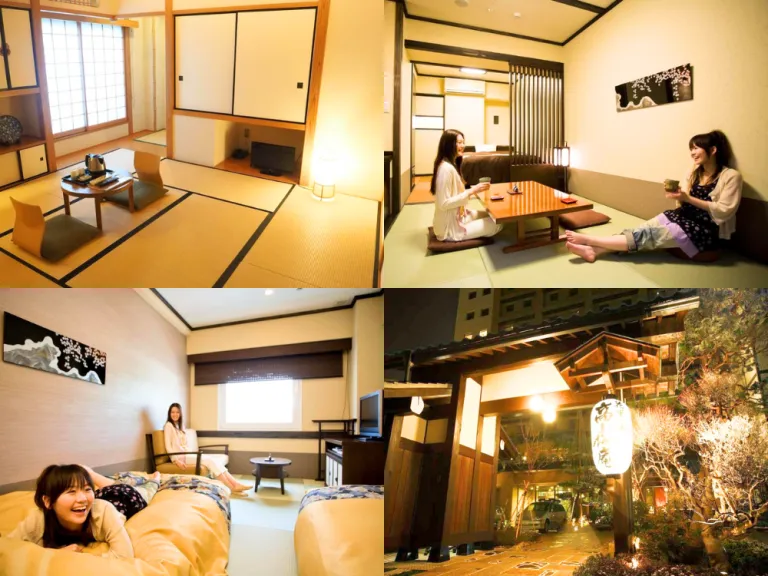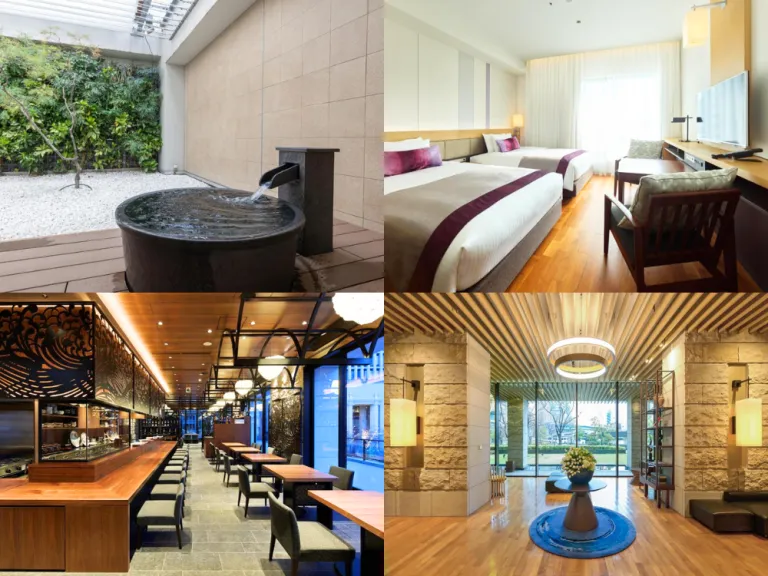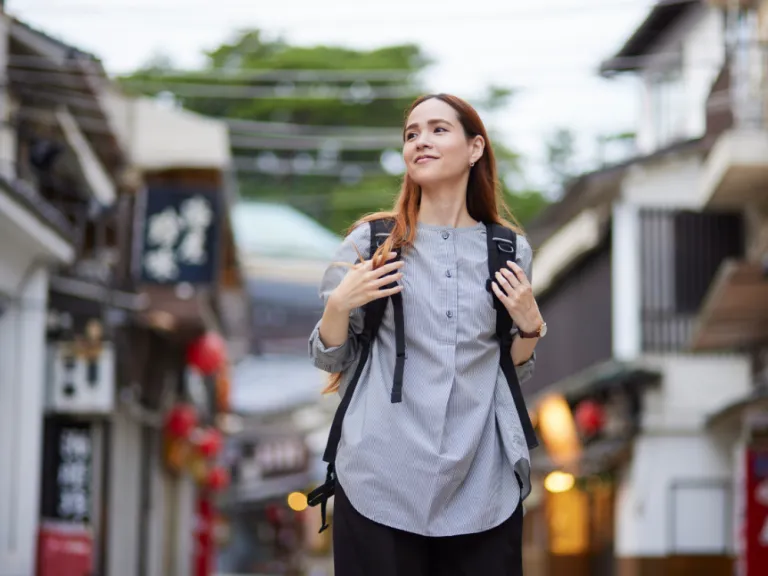Our favourite places to stay on this sleepy Cebu island.
Ryokan or Hotel in Japan? Here’s What You Need to Know Before Booking

When visiting Japan, many Filipino travellers find themselves wondering which accommodation suits them best: a traditional ryokan or a modern hotel. Both offer unique experiences and have their own appeal, but choosing the right place to stay can truly shape how you enjoy your trip. It is important to consider your travel style, budget, and what kind of experience you want so that your stay matches your needs perfectly.
This guide will help you understand the key differences between ryokans and hotels, share real-life examples, price tips, and advice on the best times to book so you don’t miss out on your ideal stay. Making the right choice will help you get the most out of your Japanese adventure.
Also read: New Japan Immigration System Makes It Easier for Filipino Tourists
What is a Ryokan?
 Image credit: Takayama Ouan | Booking.com
Image credit: Takayama Ouan | Booking.com
A ryokan is a traditional Japanese inn that feels very different from a regular hotel. Yes, it’s basically a BNB, but a traditional Japanese BNB. Instead of normal beds, you sleep on futons laid out on tatami mat floors. Rooms have sliding paper doors and simple wooden furniture. Meals are usually included and served in your room. They feature fresh, local ingredients prepared in a traditional style.
Many ryokans have natural hot spring baths called onsen, where you can relax after a day of sightseeing. For example, in Hakone near Mount Fuji, places like Gora Kadan offer guests private baths and multi-course dinners. This area is popular with Filipino travellers who want a taste of classic Japan.
Prices for ryokans usually range from about ¥15,000 to ¥50,000 per night (around ₱6,000 to ₱20,000). The more expensive ones offer private baths or fancy meals. Dinner and breakfast are often included in the price, so you get a complete experience.
Pros
Often have spacious rooms, ideal for families or groups who want to stay together comfortably.
Offer an authentic and peaceful Japanese experience with traditional rooms and customs.
Include meals, usually prepared with fresh, local ingredients, giving you a true taste of Japanese cuisine.
Provide relaxing hot spring baths (onsen) to unwind after a day of exploring.
Create a calm atmosphere, perfect for travellers who want to slow down and enjoy quiet surroundings.
Cons
Sleeping on futons placed on tatami mats may feel less comfortable if you prefer Western-style beds.
Prices tend to be higher because meals and onsen access are often included.
Not all ryokan staff speak English well, which can make communication difficult for first-time visitors.
Also read: The Ultimate Winter Japan Bucket List for Filipino Families: Tokyo and Osaka
What About Hotels?
 Image credit: Mitsui Garden Hotel Osaka Premier | Booking.com
Image credit: Mitsui Garden Hotel Osaka Premier | Booking.com
Accommodation options in Japan range from simple business hotels to international chains, offering something for every kind of traveller. Most places provide Western-style beds, private bathrooms, and easy access to popular city attractions.
For budget-conscious travellers in Tokyo, chains like APA Hotel offer clean, compact rooms starting at around ¥5,000 to ¥10,000 per night (₱2,000 to ₱4,000). Those seeking more comfort might prefer mid-range hotels such as Hotel Niwa Tokyo, where rooms typically cost between ¥12,000 and ¥20,000 (₱5,000 to ₱8,000).Prices vary widely depending on the type of accommodation — budget stays can be found for as low as ¥4,000 (₱1,600), while luxury hotels can charge over ¥30,000 (₱12,000+) per night. Many properties provide flexible meal options, allowing guests to choose whether to include meals or explore local dining on their own.
Pros
Provide familiar comforts such as Western-style beds and private bathrooms, ideal for travellers seeking convenience and ease.
Tend to be more affordable, especially budget hotels.
Offer flexible meal options or no meals included, allowing you to explore local restaurants.
Most hotel staff speak some English, making communication easier.
Usually located in convenient areas with easy access to transport and city attractions.
Cons
It generally lacks the traditional Japanese atmosphere.
Rarely have onsen baths on site.
Can be noisier, especially in busy city areas, which might not suit travellers seeking peace and quiet.
So, where should you stay?
 Image credit: Can
Image credit: Can
Also read: Solo in Japan: 13 Days & 7 Cities for Less Than ₱50k
If you want an authentic Japanese stay with hot springs and traditional food, and don’t mind paying a bit more, try a ryokan. It’s especially great if you want to relax and slow down. If you prefer comfort, easy access to transport, and a lower price, hotels are the way to go. Perfect for city explorers or travellers on a budget. Many Pinoy travellers mix both — a few nights in a ryokan for the culture, then switch to a hotel for convenience and savings.
For Filipinos planning a Japan trip, knowing the difference between ryokan and hotel can make your stay more enjoyable and budget-friendly. To truly enjoy your Japan adventure, you should pick what fits your travel style and budget!
Thinking of booking your next trip to Japan trip? Start early, especially around big events and popular seasons, to get the best price and availability for your ryokan or hotel stay!
Published at
About Author
Wynona Purl
Subscribe our Newsletter
Get our weekly tips and travel news!
Recommended Articles
10 Bantayan Island Resorts, Hotels, and Rentals for Your Tropical Escape 10 Best Things to Do in Los Angeles Los Angeles is more than Hollywood stars. From hikes with killer views to beaches straight out of a rom-com, here are 10 must-do LA experiences for Filipino travellers or any wanderers in general!
10 Commandments for Responsible Travel Flexing Spread the good word!
10 Cutest Cafes in Japan That Are Totally One of a Kind From Pikachu snacks to Totoro cream puffs, here are 10 themed cafes in Japan that prove café hopping should be part of your travel itinerary.
10-day Christmas and New Year Japan Trip: Complete Travel Itinerary Celebrate Christmas and New Year in Japan with this 10-day holiday vacation itinerary packed with Tokyo lights, Kyoto charm, and Osaka adventures.
Latest Articles
SM North-Trinoma Walkway Soon to Be Built, Says DOTr Safer walks ahead!
Pangasinan Town Now Accepts Digital Payments in Markets and Transport No cash? No problem. Alcala, Pangasinan is officially in its digital era.
Pop Mart PH Opens Permanent Flagship Store in SM Megamall Labubu and Hirono have arrived! Check out holiday hours and event recaps here!
Chen of EXO Arcadia Concert Manila 2026: Tickets, Dates, and Perks Ticket info and fan perks
TLC Playpark: Free Christmas Destination in Taguig, Opening Hours, and Commute Guide Learn what to expect and how to get to TLC Playpark in Brgy. Lower Bicutan Taguig via C5 and MRT-3!

